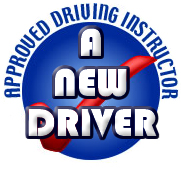
What are the Basics of Driving?
The Basics of Driving Most people think that the only thing you need to know how to do in order to drive is how to turn the wheel and hit the gas. However, there’s a lot more to it than that.
If you want to be a good driver, you need to know the basics.
Basic Driving Rules
Learning to drive can be a daunting task, but once you know the basics, it’s really not that difficult. In this blog post, we’ll cover the basic driving rules that everyone should know before hitting the road. First and foremost, always wear your seatbelt.
Seatbelts are there for a reason to keep you safe in case of an accident. No matter how short your trip is, or how good of a driver you are, always buckle up before driving.
Secondly, pay attention to the speed limit and adhere to it as much as possible. Speeding is one of the leading causes of accidents, so it’s important to always obey the posted speed limit. This doesn’t mean you have to crawl along at a snail’s pace – just be aware of how fast you’re going and don’t exceed the limit.
Thirdly, come to a complete stop at all stop signs and red lights. Again, this is for safety reasons – if everyone followed this rule, there would be far fewer accidents at intersections. So even if there’s no one else around, don’t just roll through that stop sign – come to a full stop before proceeding.
Finally, use your turn signals when changing lanes or turning corners.
This lets other drivers know what you’re doing and helps them adjust accordingly. Not using turn signals is not only dangerous but also illegal in most states – so make sure to use them every time! These are just a few of the basic driving rules that all drivers should follow.
By following these simple guidelines, you can help make our roads safer for everyone involved!
What are the Basic Driving Skills?
Let’s say most people know the basics of driving a car. But there are still some skills that are essential for every driver to know.
Here are some of the most important driving skills that you should master:
1. Starting and stopping the car smoothly: This may seem like a simple task, but it is actually quite difficult to do without practice. You need to be able to control the gas and brake pedals simultaneously in order to start and stop your car without jolting.
2. Turning corners correctly: When turning a corner, you need to turn the steering wheel smoothly and slowly so that your car doesn’t veer off course. Remember to signal before you turn!
3. Changing lanes safely: Merging into traffic can be tricky, but it is important to do it correctly in order not to cause an accident.
First, check your mirrors and blind spots for other cars; then, signal before changing lanes; finally, accelerate or decelerate as needed so that you match the speed of traffic around you.
4. Parking efficiently: Parking can be challenging, especially in tight spaces. The key is to go slowly and carefully until you find an open spot; then, back into the space using your mirrors as guidance (if possible).
If you have trouble parallel parking, don’t worry – there are plenty of other options available (such as perpendicular or diagonal parking).
What are the 5 Knows of Driving?
There are countless things that one should know before getting behind the wheel of a car, but here are five of the most important:
1. Make sure you have a valid driver’s licence. In order to drive in most counties, you must have a valid driver’s licence. You can typically obtain one by passing a written and driving test at your local DMV office.
2. Know your vehicle. Before driving, it’s important to become familiar with your vehicle. Read the owner’s manual so that you understand how all of the features and controls work. It’s also a good idea to practice driving in an empty parking lot or quiet street so that you get comfortable with handling the car before taking it out on busier roads.
3. Obey all traffic laws and signs. When behind the wheel, it is crucial that you always obey traffic laws and signage. This means coming to a complete stop at stop signs and red lights, yielding when appropriate, do not exceed posted speed limits, etc. Not only will following these rules help keep you safe, but it will also prevent you from getting costly tickets or being involved in an accident.
4. Be aware of your surroundings. In addition to obeying traffic laws, it’s also important to be aware of what is going on around you at all times while driving. This means paying attention to other cars, pedestrians, cyclists, animals, road conditions, weather, etc., and being prepared to react accordingly.
For example, if another driver appears angry or aggressive, give them plenty of space and avoid making eye contact. If there is construction ahead, be prepared for lane changes or delays. If it starts raining unexpectedly, slow down and turn on your headlights.
By remaining vigilant, you can help prevent accidents from happening.
5. Stay calm Driving can be stressful at times, especially during rush hour or in heavy traffic, but it’s important to try and stay calm behind the wheel. Getting angry or upset will not help the situation and may actually make it worse. If you feel yourself starting to lose control, take some deep breaths and focus on relaxing until things improve. Remember: staying calm behind the wheel helps everyone stay safe on the roadways!
Conclusion
Practice makes perfect. The more time you spend behind the wheel, the better you’ll become at driving. If possible, find a friend or family member who can help you get some extra practice before taking your driving test.
